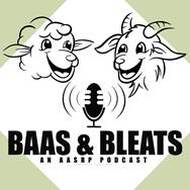 Are you a bovine or companion animal veterinarian interested in working with local dairy goat producers but need to brush up on your caprine knowledge? Maybe you own dairy goats and want to take your herd health and milk quality to the next level? The American Association of Small Ruminant Practitioners has a podcast for you!
0 Comments
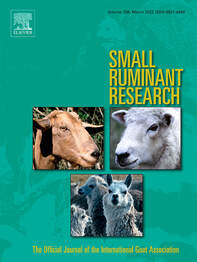 Contribution of small ruminants to food security for Ethiopian smallholder farmers Volume 184, March 2020, 106064 Hiwot Desta Wodajo, Biruk Alemu Gemeda, Wole Kinati, Annet Abenakyo Mulem, Anouka van Eerdewijk, Barbara Wieland Abstract This study investigates how and to what extent arguments related to food security influence preference of livestock species for women and men. Data was collected in four regions of Ethiopia through 92 focus group discussions (FGD) in communities where small ruminant production is common, Using a gender sensitive study designs, 23 FGDs were held separately with men, women and youth (male and female), and through a household survey involving 217 male and 212 women. Qualitative analysis was conducted to extract reasons given to explain the importance of livestock. Reasons related to food security were mapped to the four dimensions underpinning food security—accessibility, availability, nutritional value and stability. All FGDs considered sheep the most important livestock species, followed by cattle, with women allocating higher scores to sheep than men. All four dimensions of food security came up in statements explaining the importance of species but with variations across species. Interestingly, food security related arguments were most prevalent for goats followed by poultry. Of reasons given by women concerning the importance of goats, 78 % were related to food security with all four dimensions represented, and 52 % for poultry with two dimensions (availability and nutritional value). Answers from men especially had a stronger focus on economic reasons directly linked to income generation. Nevertheless, 64 % of men’s arguments for goats were related to food security. For sheep however, women only scored higher for arguments related to availability. When investigating purpose of small ruminant production at household level through a household survey, the importance of small ruminants for food security were confirmed; however, gender differences were less apparent. Being able to sell animals at short notice was the main reason for keeping small ruminants for both women and men followed by meat and milk for home consumption. Women’s argument for prioritizing selling were accessibility. For men, key arguments for selling were related to availability. For meat and milk their nutritional value was an important argument. Comparing agroecologies, accessibility (selling) was ranked top in highland areas and nutritional value (milk) was most important in lowland areas. In conclusion, this study provides much needed evidence on how small ruminants contribute to different dimensions of food security and are promising entry points targeting women to improve food and nutritional security by providing adequate animal source foods in a household. To read the entire article, visit SRR 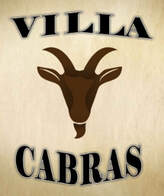 Date: November 4, 2019 By: Bertha Cecilia Cardenas Sterling, Technician in administration and commercialization of perishable products, owner Interactive Farm Villa Cabras Jair Trujillo Trujillo, Business Administrator, owner Interactive Farm Villa Cabras Clara Viviana Rúa B, IGA Country Representative for Colombia Location Villa Cabras Interactive Farm is located in Chucuní, a village located 9 km from the city of Ibagué, the musical capital of Colombia, in the department of Tolima. In terms of the local climate, the summers are short and hot, the winters are short, comfortable, humid and wet, and it is cloudy throughout the year. During the course of the year, the temperature generally varies from 17 to 28 °C and rarely falls below 16 °C or rises above 31 °C. It rains throughout the year but the driest month is January, with 91 mm of rain. With an average of 233 mm, the highest monthly precipitation falls in October. 8th IDF International Symposium on sheep, goat and other non-cow milk, May 4-5, 2020, Belgium1/18/2020 IDF is bringing together the global dairy community to focus on “Sheep, Goat and other non-Cow milk” in Brussels.
Sheep, goats and other non-cow milk producing animals are widely distributed throughout the world. They contribute to sustainable livelihoods through support of the economy, rural and peri-urban livelihoods, the empowerment of women, and food security. Find out more at the symposium's website: https://www.fil-idf.org/sheepandgoat2020/ Estos videos muestran la preparación tradicional de productos de cabra por la etnia Wayuu de La Guajira en Colombia. Un agradecimiento especial a Clara Viviana Rúa Bustamante (IGA-CR Colombia) por llamarnos la atención sobre estos videos. Goats products preparation, Colombia
These videos show the traditional preparation of goat products by the ethnic Wayuu from La Guajira in Colombia. They are in Spanish. VIDEO 1 Dried meat - Traditional preparation of goat and sheep meat VIDEO 2 Dulce de leche (Caramel) - Traditional preparation Special thanks to Clara Viviana Rúa Bustamante (IGA-CR Colombia) for bringing these videos to our attention. Abstract
Bacteria in low moisture environments are not favorable for growth, but can survive and cause a possible food safety risk for consumers. A study was conducted to evaluate survivability of Escherichia coli and storage stability of commercial powdered goat milk (PGM) products. Three batches of whole milk PGM samples were purchased at a local outlet, and divided into two halves to assign non-inoculated control and E. coli inoculated groups, then stored at 4 and 22°C for 0, 2, and 4 months. Results showed that significant reduction (P<0.05) in E. coli counts occurred at 22°C treatment group by more than 2 log CFU/g at 2 months storage, then further decreased by an additional 0.37 log CFU/g at 4 months storage. The survival of E. coli was significantly higher at 4°C, suggesting that E. coli could survive better at 4°C by extending a longer latent period than at higher temperature (22°C) under the low water activity condition. E. coli counts had negative correlations with water activity at both temperature treatments for all three storage periods except for 0 and 2 months at 22°C, indicating that the survivability of the E. coli would decrease in powdered whole goat milk for 4 months of storage because of decrease in water activity. It was concluded that Escherichia coli survival and storage stability of the commercial PGM products were significantly (P<0.05) affected by storage temperature and time. READ MORE... The bacterium Lactobacillus rhamnosus EM 1107, used in the production of goat milk cheese, was able to survive the digestive process and to control intestinal inflammatory responses. This was the research carried out at the Federal University of Paraíba (UFPB) in partnership with Embrapa and published in the Journal of Functional Foods.
The microorganism is one of the isolates of dairy products of the Caatinga that are studied by Embrapa Goats and Sheep (EC) and partner institutions to be ingredients of dairy products beneficial to health. Among them, a 100% national goat cheese that will have this bacterium in its composition and that is already being tested in the dairy of the Carnaúba Farm, in Taperoá, Paraíba. READ MORE… A bactéria Lactobacillus rhamnosus EM 1107, empregada na produção de queijo de leite de cabra, apresentou capacidade de sobreviver ao processo digestivo e controlar respostas inflamatórias intestinais. Foi o que mostrou pesquisa executada na Universidade Federal da Paraíba (UFPB) em parceria com a Embrapa e publicada na revista Journal of Functional Foods.
O microrganismo é um dos isolados de produtos lácteos da Caatinga que são estudados pela Embrapa Caprinos e Ovinos (CE) e instituições parceiras para serem ingredientes de produtos lácteos benéficos à saúde. Entre eles, um queijo caprino 100% nacional que terá essa bactéria em sua composição e que já está sendo testado no laticínio da Fazenda Carnaúba, em Taperoá, na Paraíba. CONSULTE MAIS INFORMAÇÃO… 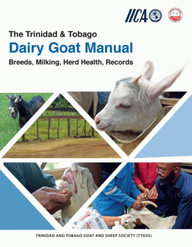 Summary The information contained in this manual describes the important aspects of dairy goat production in Trinidad and Tobago. Its purpose is to help you and other farmers improve your production. The manual assumes that you are interested in dairy goat production, but it does not assume that you know anything about rearing them. This manual provides you with some basic knowledge and technologies about various aspects of dairy goat production including but not limited to: choosing good goats, nutrition, feeding, breeding, grooming, disease control and treatment. There is a chapter which gives an example of proper record keeping tables and even includes a herd projection table for a twenty-doe unit. READ MORE… On Saturday, August 25, we had celebrated Goat Day in Kecskemét. In Hungarian, kecske means goat, so Kecskemét means goat town.
The crowning moment of this day was attempting the world record for the most people drinking goat milk. We had 434 registered participants, but nearly 800 participated. Unfortunately, these extras were unable to register during the given time period. We had hoped to have 650 people drinking goat milk at the same time in the same place. It was still a huge crowd of people and we had a great time. We also organized several other events as part of this celebration: |
IGA Blog
The International Goat Association promotes goat research and development for the benefit of humankind, to alleviate poverty, to promote prosperity and to improve the quality of life. Archives
May 2024
Categories
All
|
|
International Goat Association
2516 Millbrook Rd., Little Rock, AR72227 USA email: [email protected] -454-1641 |
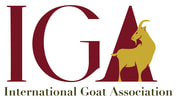

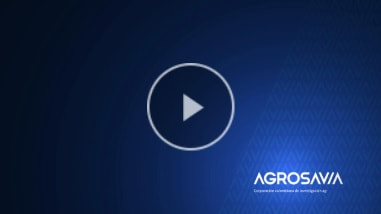
 RSS Feed
RSS Feed